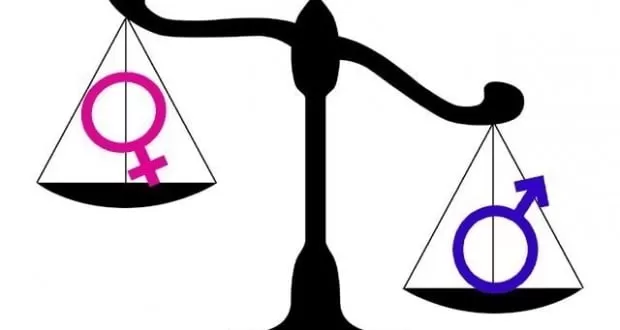A glimpse into gender discrimination in the Nepali Community
Riju Devi
“The history of men’s opposition to women’s emancipation is more interesting perhaps than the story of that emancipation itself.” ——-Virginia Woolf
The state/status of men and women and their relationship to each other is much influenced by a particular religion, culture, livelihood system and social organization of people living within it. Hence, gender relations differ from one society to another where particular roles, rights and responsibilities are assigned to men and women along with their relative status. In the view of Talcott Parsons, a leading functionalist thinker, a well-defined sexual division of labour is necessary for the smooth functioning of a family. In such a division, women have the expressive roles according to which she provides security and care to the children and offers them emotional support. While men, by being the breadwinner of the family, should perform the instrumental role (Giddens, 2010). Such kind of an arrangement has traditionally been reflected in the patriarchal societies all over the world and continues to foster gender stereotypes in both extremes and subtle ways depending on the extent of modernisation a society undergoes. This article tries to understand the patriarchy induced inequalities by touching some issues revolving around the status of women in the Nepali community through the focus on traditional customs and norms.
The Nepali community with its cultural, ethnic and religious diversity is majorly a Hindu and a patriarchal, patrilineal and patrilocal society, where a women’s life is strongly shaped by the male members of the family. However, the relative status of women varies from one group to another within the Nepali community. The contribution of women in the family although significant, goes relatively less noticed, probably due to the traditional ‘expressive’ role attributed to her which again is taken for granted. Moreover, most of the work done by women is not regarded as economic activity, eventually establishing their work as less important in a wider sphere.
The culture we are born into and the social norms we follow socialize us in such a way that most of the time we accept and absorb what we see as ‘right’ within our culture. And we also try to forge ourselves to fit into the accepted form of behavior and conduct that we know will be applauded. Although, such social control aims at restraining deviant behavior and maintaining social order through both formal and informal means, it also acts as a device used by the dominant section to control the so called weaker section. Thus, to understand how gender differences are shaped in a society, it is important to know gender socialization in that society which entails “the learning of gender roles with the help of social agencies such as family and the media. Such an approach makes a distinction between biological sex and social gender–an infant is born with the first and develops with the second. Through contact with various agencies of socialization, both primary and secondary, children gradually internalize the social norms and expectations which are seen to correspond with their sex” (Giddens 2010, 602). A Nepali proverb – ‘Chori ko janma, haareko karma’ meaning ‘you have already lost in life the moment you are born as a girl child’, helps us to understand such situations. The patriarchal system we live in propagates the idea that only men is capable of saying the right things and making right judgment, hence their socialisation process concentrates on making them both physically and mentally sound. And, in order to uphold the harmony of the family, women are taught to be caring, docile and accommodating to go with the strong man. The women therefore were denied education for long so that the mutual relationship within a family remains free of conflict. Moreover, an educated woman also appeared as a potential threat to the prevailing patriarchy (Luitel 2001).
Manusmriti, an ancient Hindu legal text says, “(H)er father protects her in childhood, her husband protects her in youth, and her sons protect her in old age; a woman is never fit for independence” (Manusmriti 9.3 cited inhttp://www.hinduwebsite.com/hinduism/h_women.asp). In the Hindu festival of ‘Teej’, women fast the entire day for the well being and a long life of their husbands. This festival is of prime importance to the Nepali community and is generally celebrated in the natal family. In this festival, rituals suggest that the brother of a woman must come to her house and take her to the ‘maita’– natal family (especially in the initial years after marriage). Although this gesture signifies care for the daughter/sister, it also highlights the fact that women are to be assisted and should not be on her own. Such customs not only encourages the dependence of women on the male members in the family but also shapes her identity and status in the public. However, such customs are not in wide practice today but are worth mentioning in order to understand the women’s position in rituals. Another Nepali proverb ‘Chori mari, gaalei taari’, meaning, rather than mourning a girl child’s death, one should be glad as she takes along with her the probable pain she would cause to her parents. Such terms are (were) mostly used to console the parents when a girl child dies at birth which considers that in spite of the loss they actually are free from a burden. The burden of worrying about the honour of the family with a girl around, the burden of keeping her properly cultured with a clean character until a proper match is found. It generally is painful for a parent to lose any child (girl/boy), but the assumption as suggested by the above mentioned proverb, that the sorrow would be more had it been the death of a boy, draws attention to the importance a girl holds in the society.
Bina Agarwal in her article, “Rural Women, Poverty and Natural Resources” (1989), discusses about the intra- household gender inequalities in access to basic necessities wherein she emphasizes the issue of discrimination in intra-household food distribution in terms of actual food intakes. Although such trend is more acute in the poor households, in most other families too such unintended bias takes place. The term ‘bhaanse’ in Nepali refers to the person who cooks and serves in a family, who normally is a woman. The ‘bhaanse’ is responsible to ensure that everyone in the family is served food properly, only after which she eats. At times when the cooked food falls short, she rather than cooking for herself all over again, manages with whatever is left to avoid extra work. Such trend leads to ignorance on the women’s part regarding her daily intake of nutrition which eventually poses threat to her health. With all the physical and mental labour a woman performs on a daily basis, it is very important to take proper care about her balanced intake of food.
Giddens writes, “(R)adical feminism is that branch of feminism, the central concern of which is the analysis of patriarchy- the systematic domination of women by men. The radical feminists concentrate on family as one of the primary sources of women’s oppression in society. According to them, men exploit women by relying on the free domestic labour that women provide at home” (Giddens 2010: 617). Such systematic domination as advocated by the radical feminist, can be clearly observed in the Nepali community where fathers are legally obligated to leave equal portions of land to each son while daughters generally do not inherit paternal property, unless they remain unmarried (or in some other special cases). Besides, the women are reluctant to claim their share due to the probable conflict that could occur between her and her natal home. She fears that, demanding her share of father’s property (especially after marriage) would create differences with her brothers. Now, a woman who has no strong resources at her disposal and is dependent on her husband would abstain from taking such risks as she would lose support in case of widowhood or divorce. However, there are other equally crucial factors that act as a hindrance to women’s ability to claim as well as control and self manage land. Bina Agarwal, has provided three important obstacles to self-management of land by women viz. i) The physical and social confinement of women, ii) Post-marital residence: village exogamy and patrilocality and iii) Male control over labour and technology. She explains that women’s capability to self-manage land is much related to the amount of freedom they can exercise specially in terms of interaction with me (Agarwal 2008). For instance, in a village, a woman with no male member in the family will have to face several speculations regarding her character, if found being much in contact with other men (even regarding work). The generally accepted norm of patrilocality (women settling in her husband’s village/household after marriage) too makes it difficult for the women to manage her paternal property. Moreover, illiteracy, limited access to cash as well as the market, creates hindrances to her direct control over land eventually making her dependent on men (ibid).
The Nepali community being a predominantly agricultural society confers much power to land ownership and the relation to it further shapes one’s status in the family and beyond. And, cultural norms and customs justify the traditional male dominance over land as well as agriculture. For instance, the primary step in agriculture, i.e., ploughing of land is forbidden for women, hence establishing men as the sole manager of property, justifying their ownership.
Writing on the status of women in the Nepali community, Luitel writes, “The Nepali social system is based on patriarchal Hindu philosophy that empowers men and subordinates women. It is therefore that women are weak and dependent on men and derive their social status (including inheritance right, ritual status and access to property) from their fathers, husbands and sons. Her only property in her home (where she is married) is her ability to work. The more she works to sustain the subsistence economy the more prestige she gains in the family” (Luitel 2001: 109-110).
Changes in the status of women are impossible without both material and ideological changes. The initiation of legal reforms alone will not succeed in bringing about overall transformations. For example, the Hindu Succession Act of 1956, which allows Hindu women significant legal rights to claim immovable property, still has not been able to completely encourage women to demand their rights in practice. Due to the expected ‘accommodating’ nature of woman, she restricts herself from surpassing the traditional norms. The change in the attitude towards women is subject to constitutional changes without which her status tends to remain the same. Thus, most of the schemes and programmes issued at the interest of women empowerment end up being just a political propaganda unable to maintain long term and overall benefit (Luitel 2001). It is therefore the gender-biased customary laws and rituals that need to be readdressed and questioned.
The growing importance of education has already brought in considerable amount of transformations in the society, so has modernization. Rationality and universal perspectives have begun to replace and question age old beliefs and customs. Moreover, women’s access to formal education has helped her to shape ideas and keep herself abreast of issues related to her empowerment. It has also helped her to understand the importance of freedom of making her own choices as well as the importance of equal status as a human being. Yet, there is much to analyze and achieve for the attainment of emancipation by harnessing whatever resources available, education being the primary. However the refinement of tradition will only be possible with the collective effort of the entire society and not just women. The patriarchal arrangement, as discussed in the article, stereotypes not just women but men too (although in different ways). Thus, it is this system that we struggle against and hence should be fought together.
The writer is a research scholar in the Department of Sociology, Tezpur University
References:
-
Agarwal, Bina. “Rural Women, Poverty and Natural Resources: Sustenance, Sustainability and Struggle for Change.” Economic and Political Weekly. 24.43, (1989): 46-65. Print.
-
———— A Field of One’s Own. Special Edition. New Delhi: Cambridge University Press India Pvt. Ltd. 2008. Print.
-
Giddens, Anthony. Sociology. Sixth Edition. New Delhi: Wiley India Pvt. Ltd, 2010. Print.
-
Luitel, S. “The social world of Nepalese women.” Occasional Papers in Sociology and Anthropology, 7, (2001): 101-114. web 20 September 2014.
-
Link- iwgia.org/…/0659_Violence_Customary_Las_and_IP_women_Right
-
Link- http://www.hinduwebsite.com/hinduism/h_women.asp







